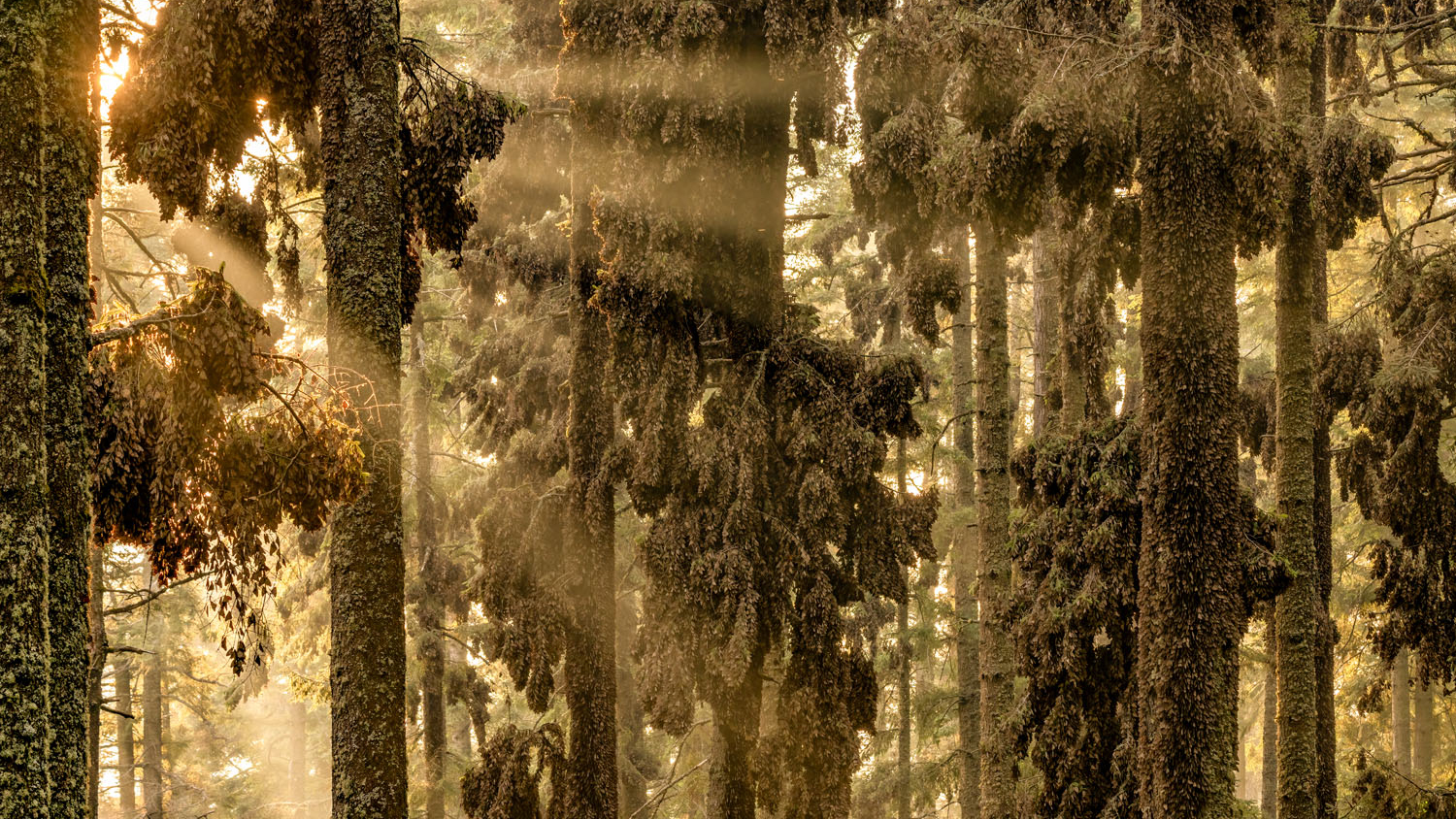
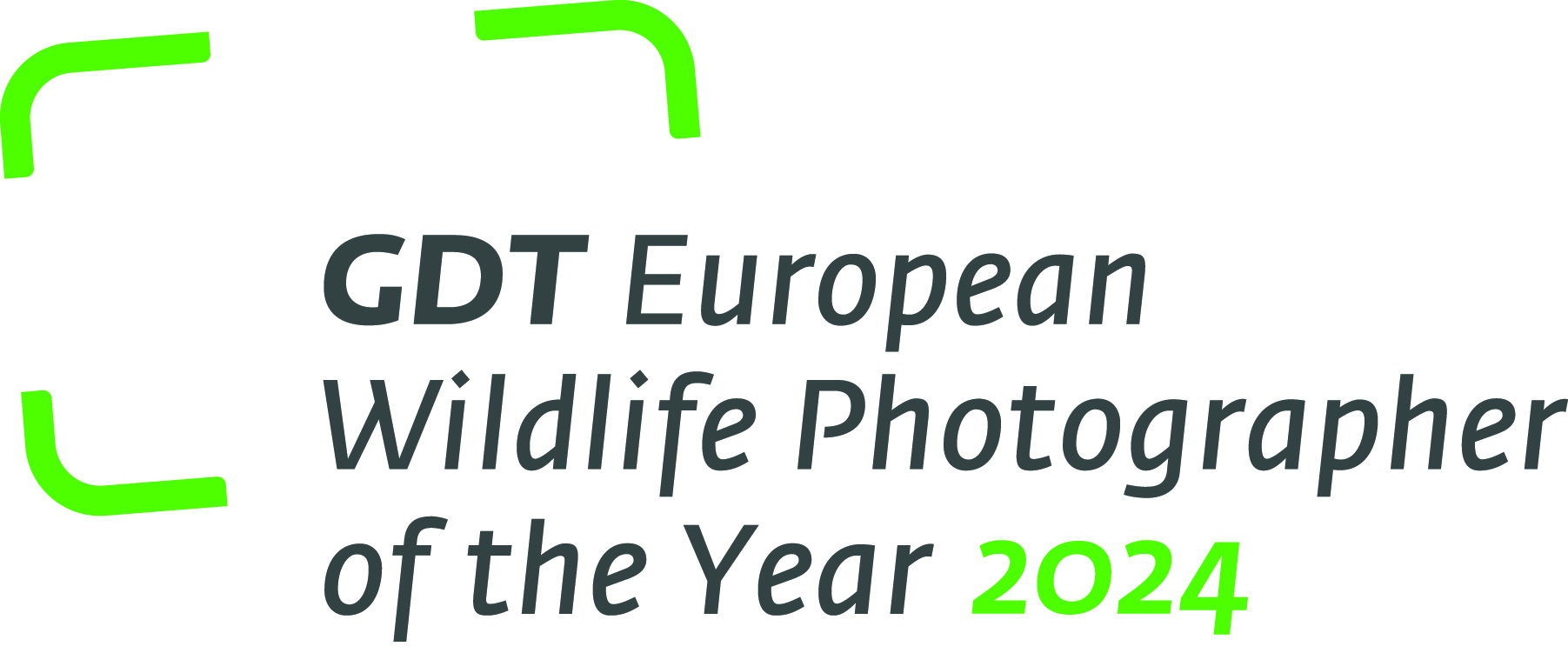
The European Wildlife Photographer of the Year competition has been organized by the German Society for Nature Photography (GDT) since 2001. The internationally renowned competition is one of the most prestigious competitions for modern nature photography, thanks to its highly qualified jury, stringent selection criteria, and ban on digital manipulation.
The competition celebrates innovation, creativity, and daring compositions, making it a trendsetter for modern nature photography, and an exhibition presenting the 104 prize-winning images is touring through Germany and several other European countries.
This year's winner of the prestigious European Wildlife Photographer of the Year competition is Jaime Rojo for his image 'In the Forest of the Monarchs' of millions of monarch butterflies covering every available surface as they roost.
He captured this spectacular shot in Mexico’s El Rosario butterfly sanctuary while on assignment for National Geographic magazine. Every autumn, millions of monarch butterflies (Danaus plexippus) travel thousands of kilometers from North America to overwinter in the branches of oyamel firs (Abies religiosa). The dense clustering of butterflies and the protection of the tree canopy provide a crucial microclimate for their survival. However, even small changes to the forest can disrupt this delicate balance.
Almost 18,000 photos were submitted to the competition by nearly 1,000 photographers from 38 countries. An international, five-member jury selected 107 winning images in nine fixed categories and two special categories. The overall winner received €3,000 ($3,250 / £2,500 / AU$4,925) from a prize pool of over €33,500 ($36,250 / £27,900 / AU$55,000), with cash prizes awarded to all first and second-place winners in each category.
Sabine Riewenherm, President of the German Federal Agency for Nature Conservation and patron of the competition, remarked: "The future of these butterflies, like so many other species, is threatened. Their habitats are vanishing due to intensive farming, herbicide use destroying milkweed, illegal logging, and increasingly severe winter storms linked to climate change."
In addition to the overall winner, there were awards in nine fixed categories and two special categories. We've run the winning images from each category below, along with each photographer's story behind their shot.
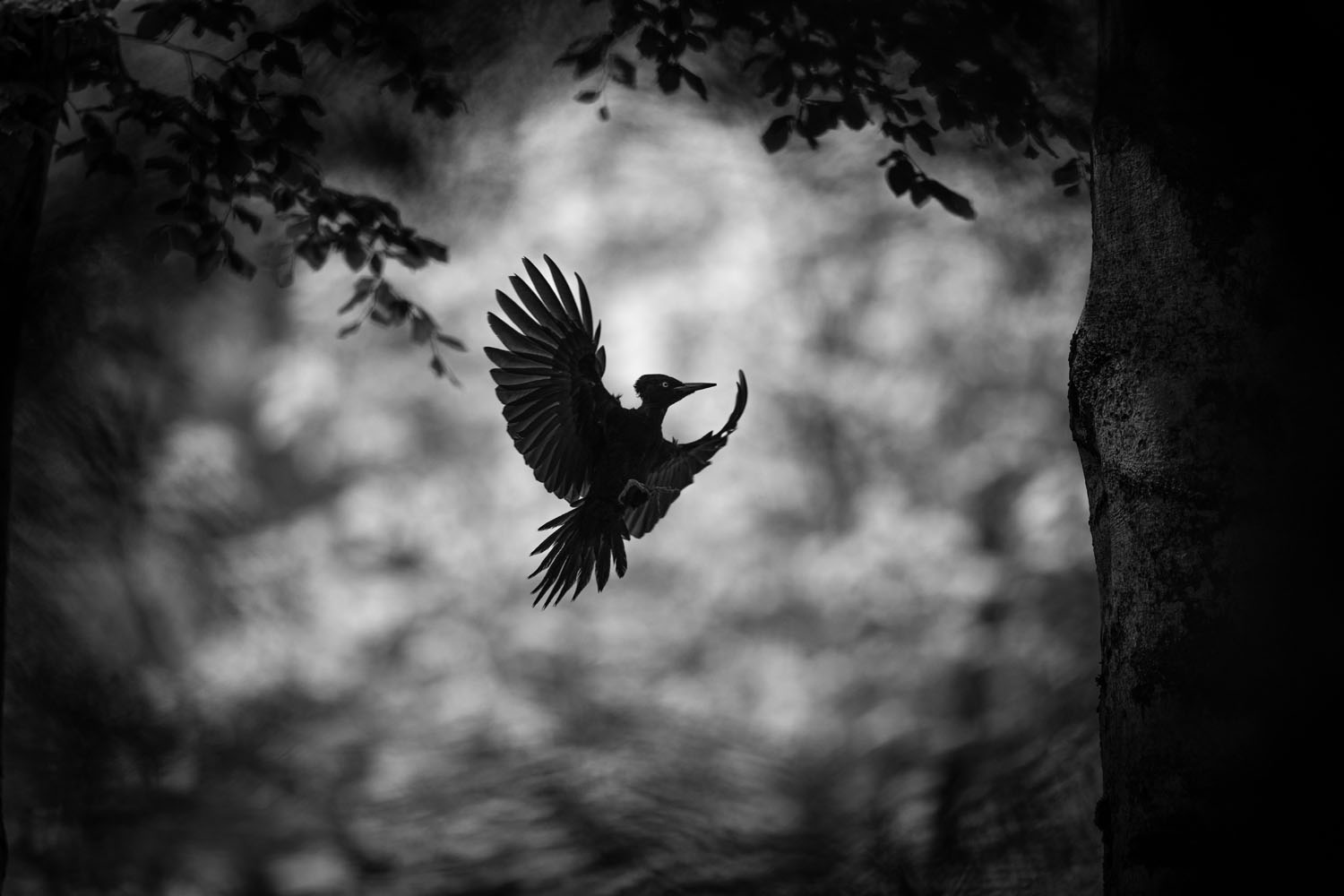
After observing a pair of nesting black woodpeckers (Dryocopus martius) for several days, I decided to set up a camouflage hide at a suitable distance. I installed the hide behind a fir tree so as not to disturb the birds and at the same time make my image visually more exciting by photographing through the branches. Once I had found a good angle, I just had to wait for the adult birds to appear. Here, you can see the male approaching with food for the hungry offspring in the brood cave.
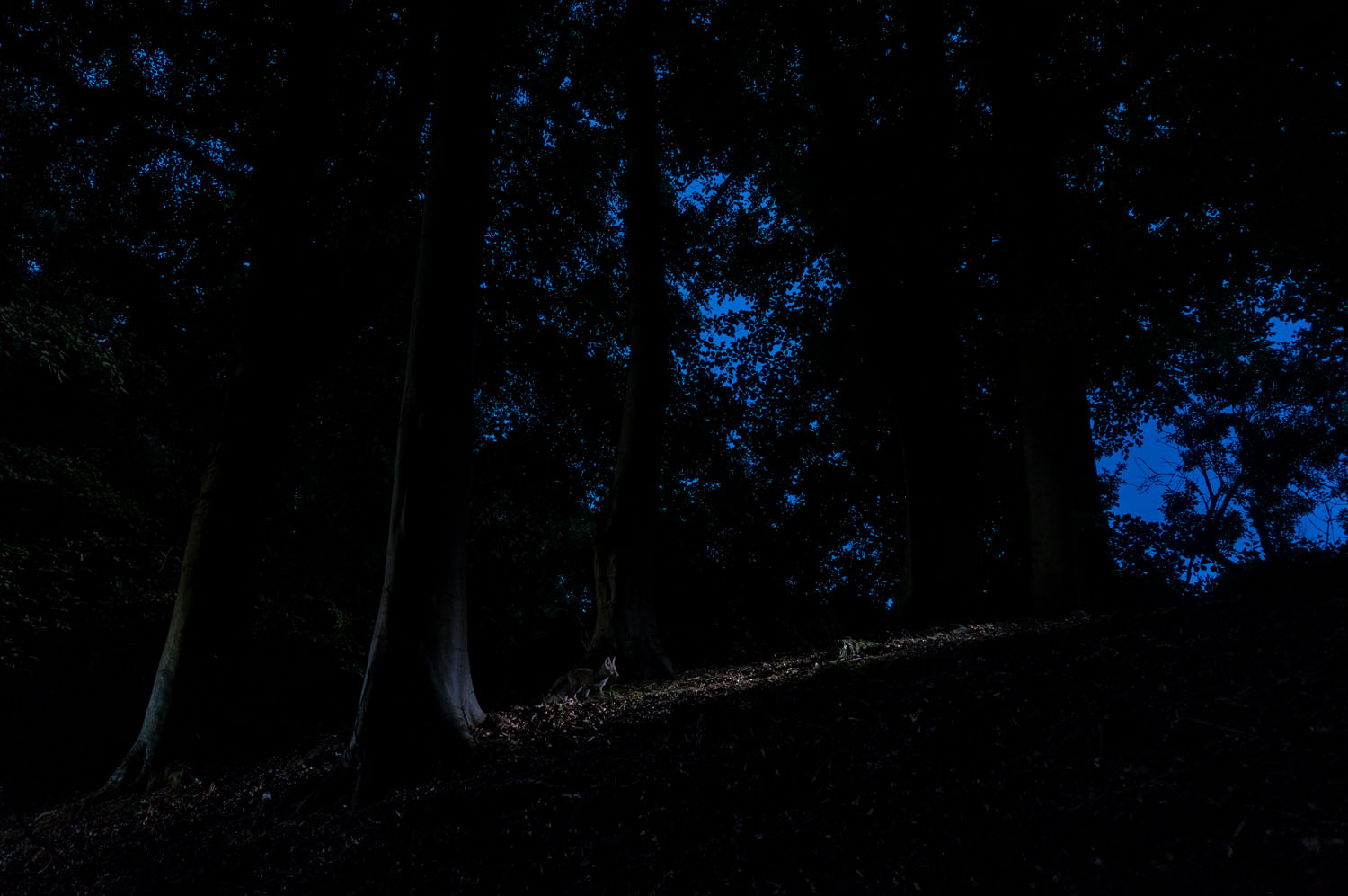
In a deciduous woodland in North Kent, England, a young red fox (Vulpes vulpes) explores the surroundings of its den. As part of a six-year project to document the grounds and wildlife of a castle 15 kilometers from where I live, I installed a camera trap on a path at the edge of the wood. The hillside location allowed me to capture the giant beech trees as well as the cautious animal against the twilight sky.
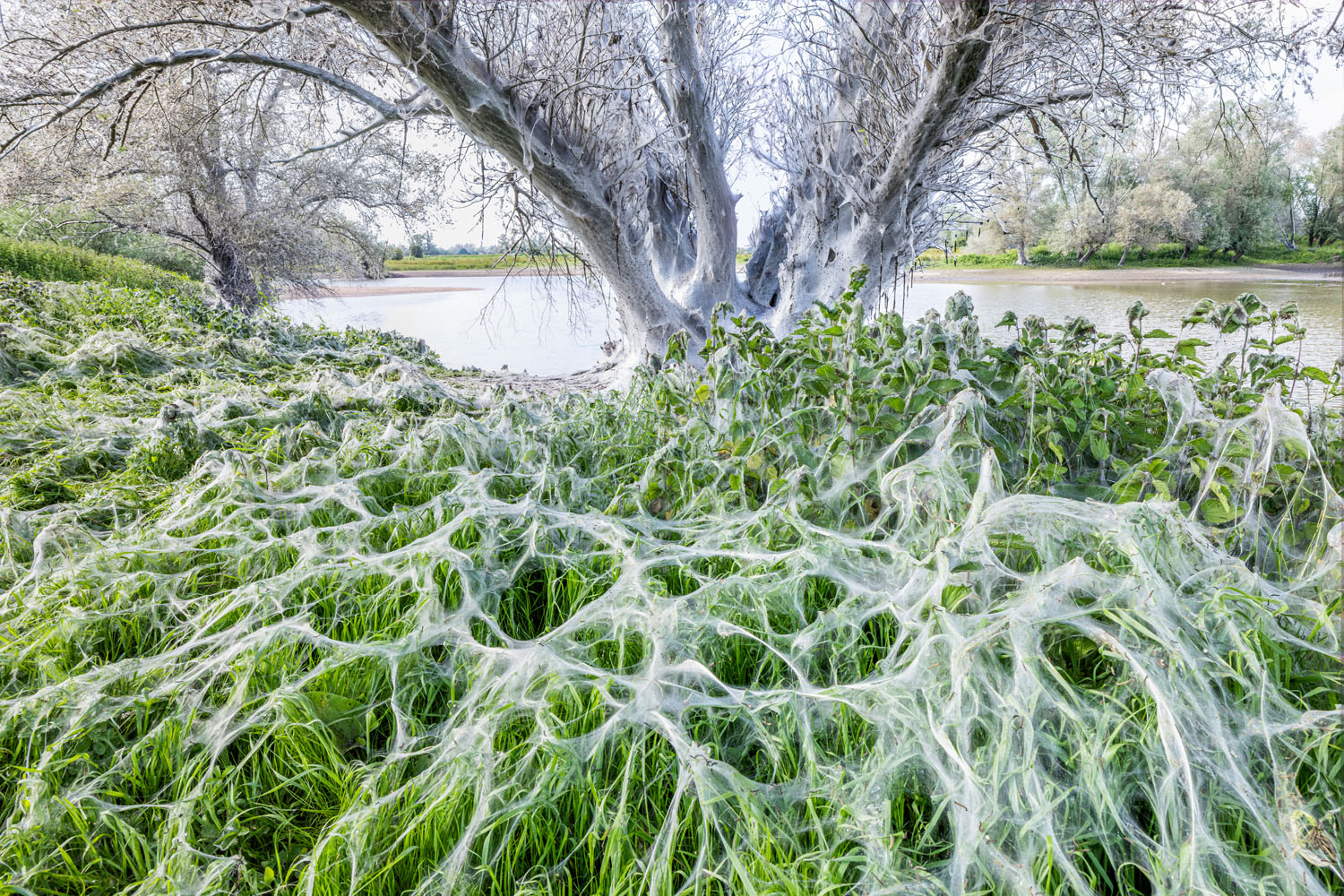
In June 2023, I heard about an explosive proliferation of willow ermine moth caterpillars (Yponomeuta rorrellus) along the river Waal near Boven-Leeuwen, not far from my home town, Arnhem, Netherlands. I drove to the location the same evening and couldn't believe my eyes: a giant old willow tree and much of the surrounding vegetation wrapped in white silk. And millions of caterpillars crawling all around. It’s obvious why the work of these caterpillars is often compared to that of the famous artist Christo who covered the Reichstag in Berlin and countless other buildings as well as trees in silk. After a few months, the webs disappeared and the willows sprouted new foliage – the caterpillar invasion left no permanent damage.
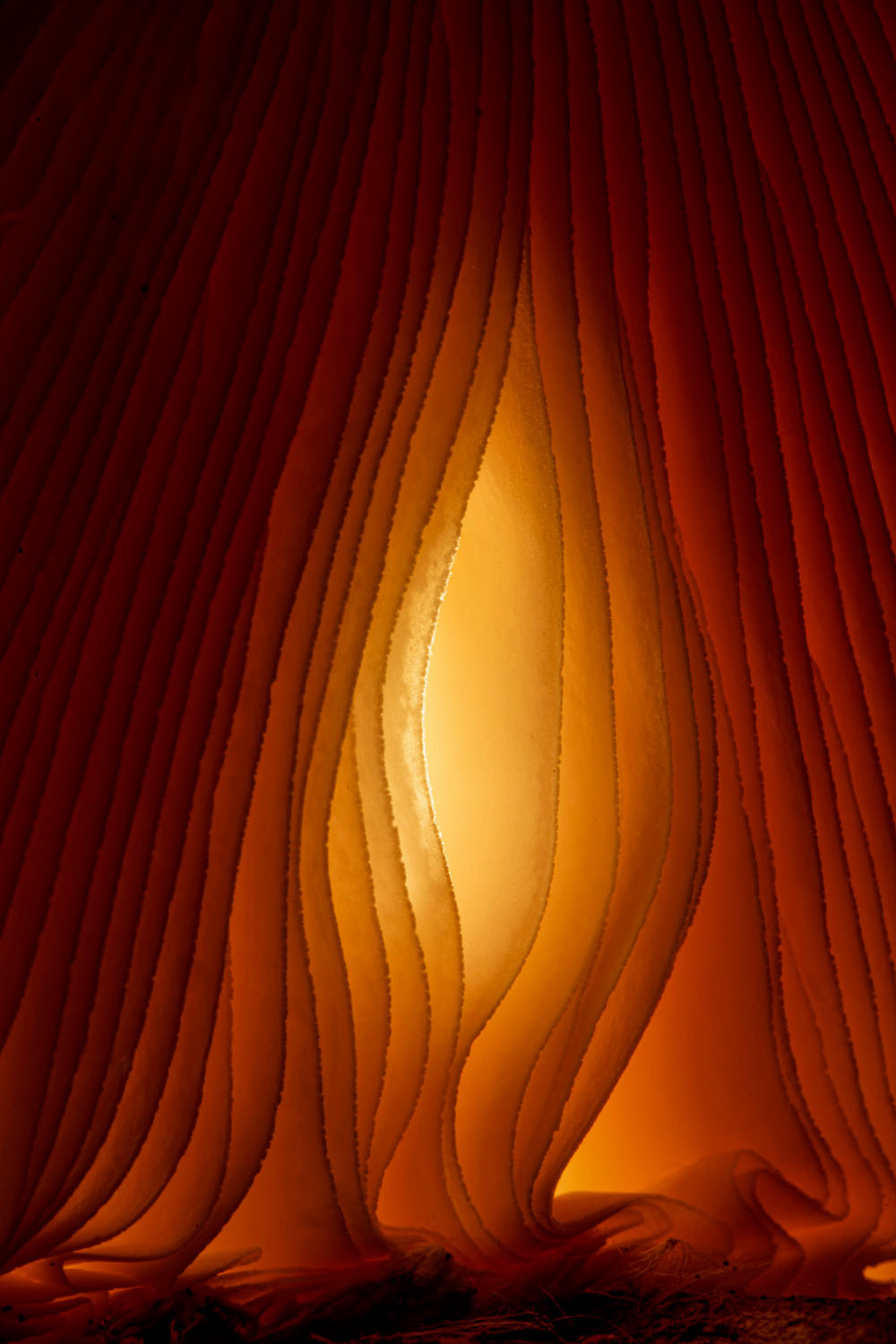
During a visit to the Lossiny Ostrov National Park (Russia), I found several parasol mushrooms (Macrolepiota procera). The pronounced lamellae under the cap of one of the mushrooms immediately caught my attention. With the help of a torch, I wanted to emphasize their elegant structures. I deliberately underexposed the shot slightly to emphasize the beautiful curves of the lamellae. The result reminds me of the front curtain in a theatre.
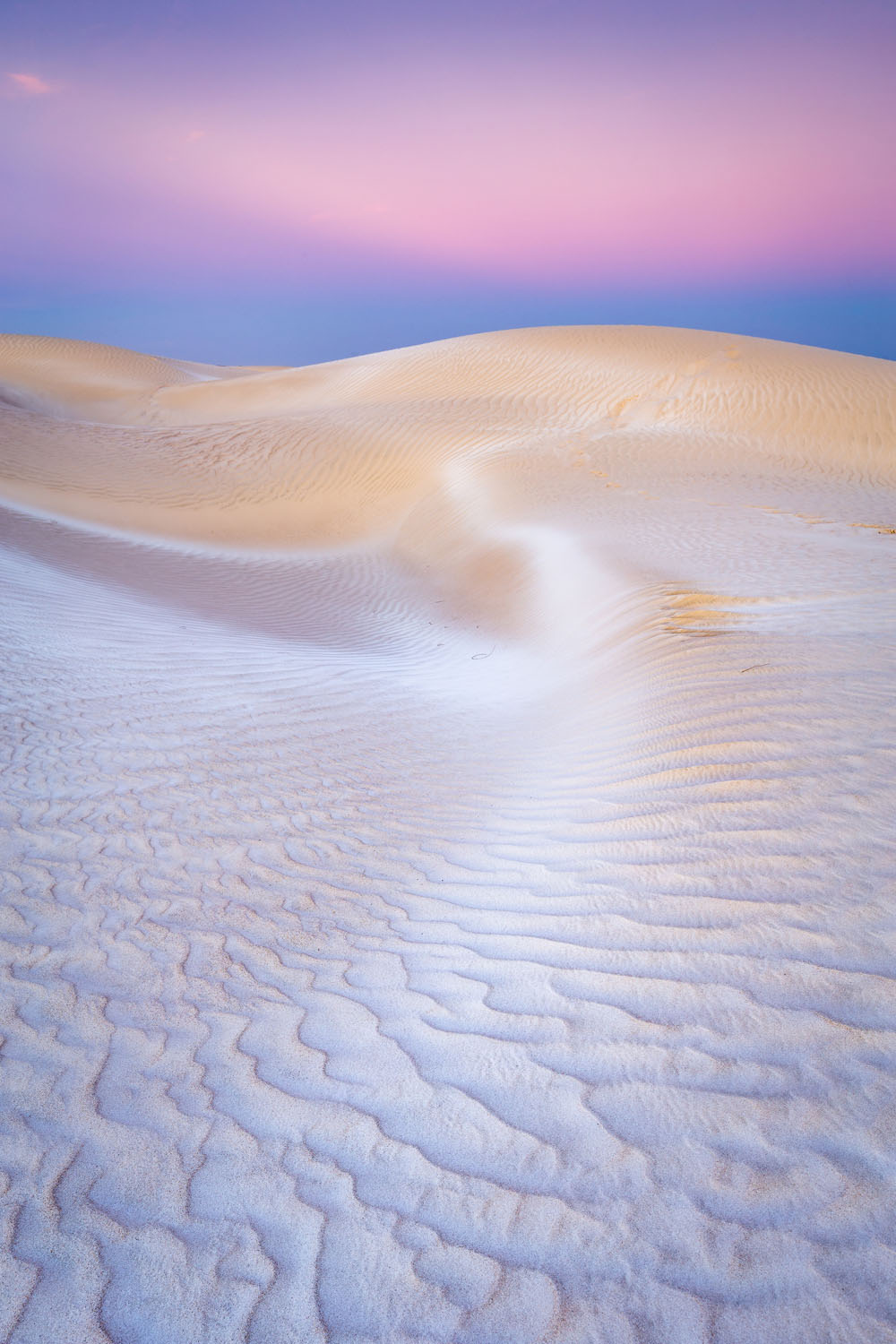
In December 2019, I visited the scenic and fascinating Sultanate of Oman. For me, one of the most exciting places was the famous Sugar Dunes on the coast of the Arabian Sea, named after the white color of the sand. The idea was to create a harmonious image of the intriguing color gradient that extended from the softly tinted sky to the ripples in the sand.
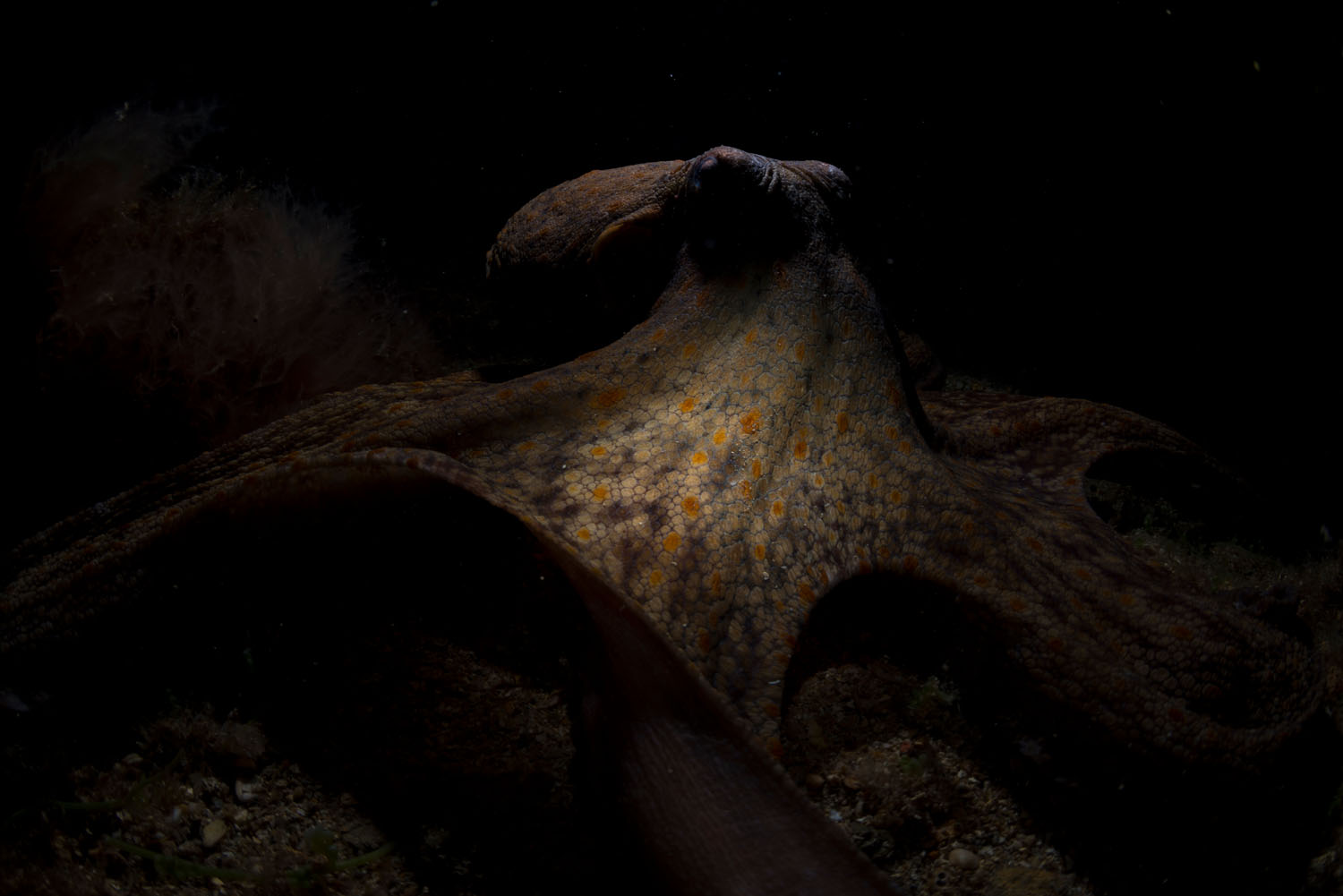
A common octopus (Octopus vulgaris) crawls across the seabed at night in search of prey. Thanks to a sophisticated combination of tactile abilities and nocturnal vision, octopuses are among the most effective nocturnal hunters in the sea. Everything about how octopuses perceive the world is beyond our imagination. In addition to their unique eyes, octopus skin contains special light-sensitive proteins called opsins that allow the entire body to perceive light. Given this, it is not surprising that these animals use more than two-thirds of their brain for visual processing. Although color-blind, octopuses use polarized vision to improve contrasts and detect enemies, conspecifics and even camouflaged prey. Last but not least, the position of the eyes on an octopus's head and its horizontal pupils mean that the animals have 360° vision with no 'blind spots'. Who can beat that?
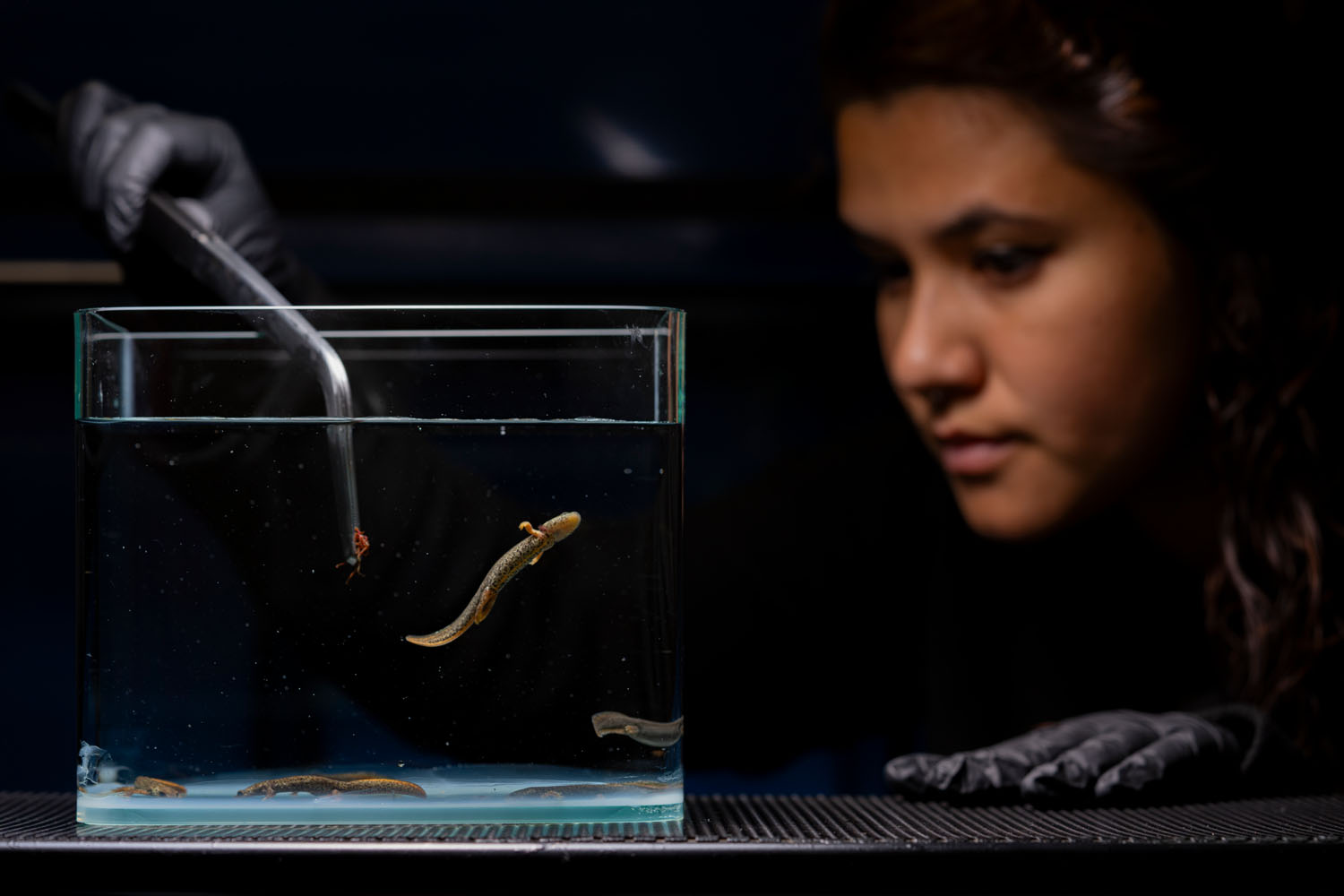
Endemic to the Montseny Mountains in Spain, the Montseny brook newt (Calotriton arnoldi) is probably the most threatened amphibian species in Europe. It is estimated that populations of this species could decline by 80% in less than one to two decades due to severe droughts and water extraction in the few streams where it still occurs. An important ex-situ breeding initiative funded by an EU-funded Life Programme is the only hope for the survival of this amphibian. The Calafell Environmental Research and Education Centre (CREAC) is part of this ambitious conservation programme. Andrea Jhulyana, the centre's biologist, feeds the hundreds of newts kept at the centre with great dedication. The animals will eventually be released into their natural habitat.
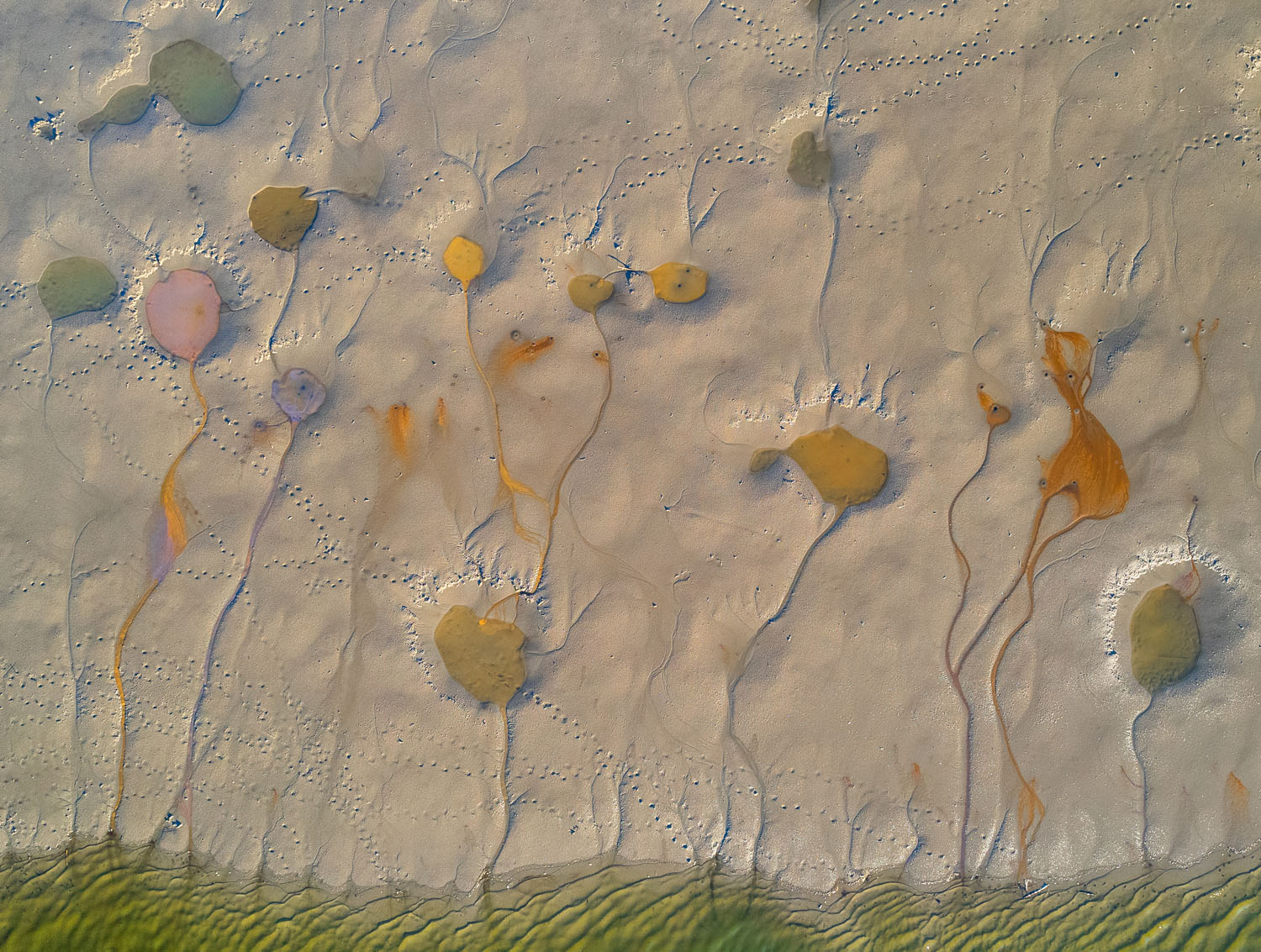
A fascinating mosaic of puddles, each with a different color, adorn a drained lakebed. The diverse colors result from differing concentrations of single-celled algae left behind by the receding water. The eye-catching interplay of shapes and colors is not only visually captivating but also a silent testimony to the impact of human activity on the environment.
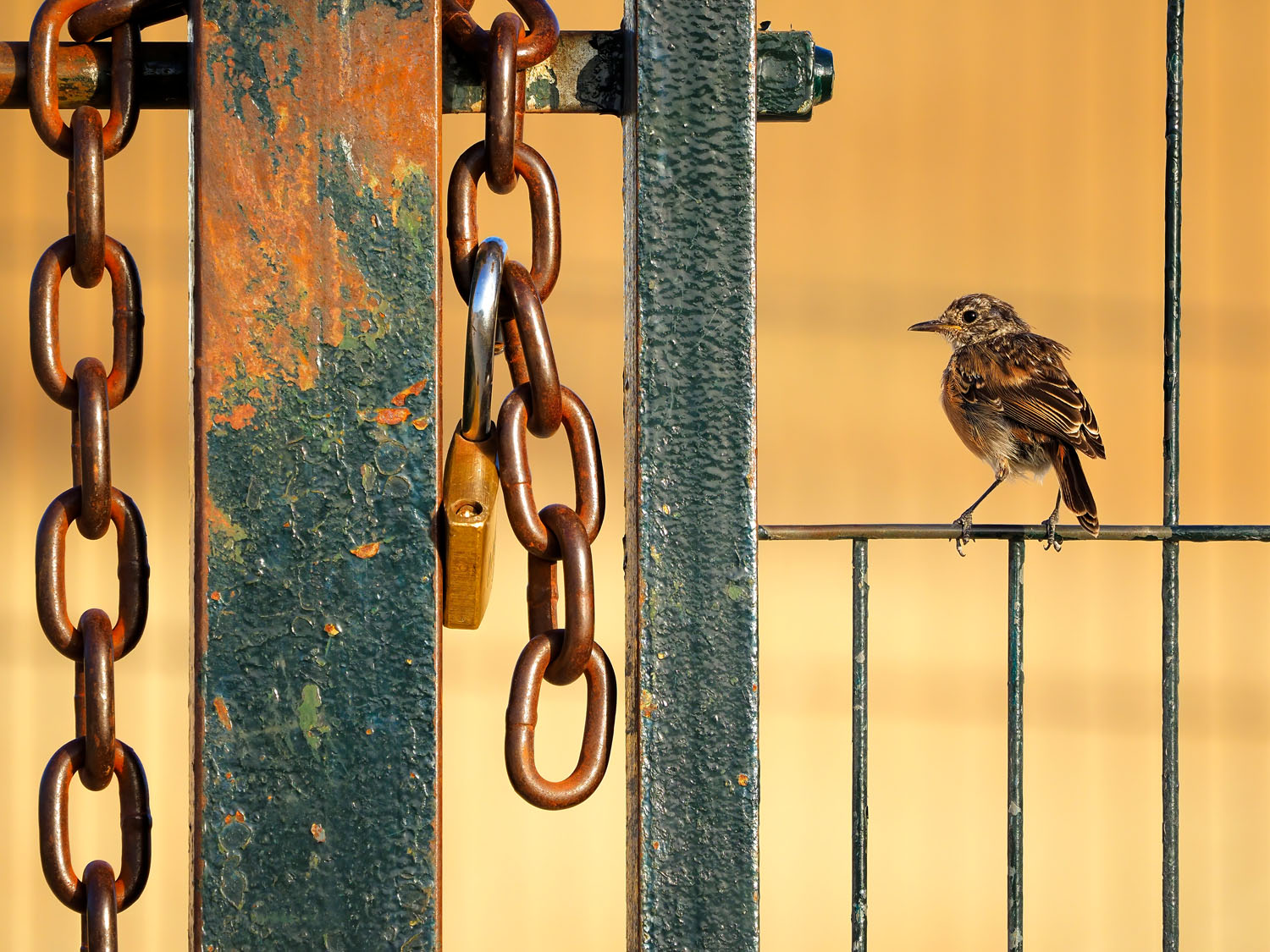
On the day this photo was taken, my father picked me up after school and we drove to an agricultural area on the edge of the Sierra de Grazalema Nature Park. We were able to take some nice pictures, and, on the way home in the car, I saw a young stonechat sitting on a fence and repeatedly flying to the ground to prey on small insects. One time, it returned to perch on the fence right next to a lock – as if to stand guard.
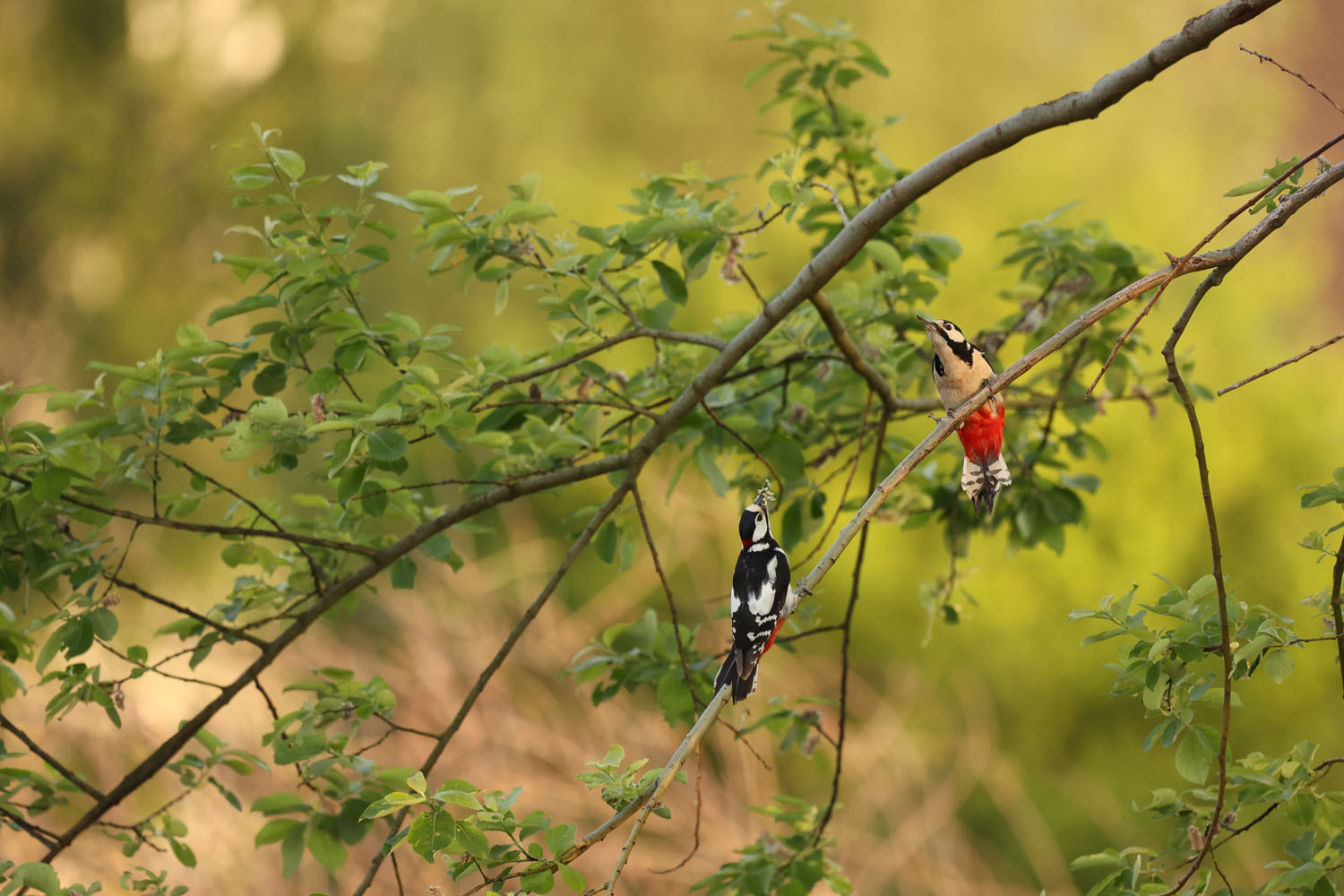
At six o'clock in the morning and armed with my camera, I went to the bushes behind our house in search of a red-backed shrike I had spotted the previous day. While I was sitting on a manhole cover and waiting, these two great spotted woodpeckers (Dendrocopos major) flew right by me. They obviously had some differences of opinion. I sat very still and took advantage of the moment. That's how this photo was taken!
This year’s jury members, including National Geographic Senior Photo Editor Alexa Keefe, nature photographer and podcaster Matt Maran, marine photographer Rachael Talibart, GDT President Stephan Fürnrohr, and conservation photojournalist Marcus Westberg, had varied backgrounds, approaches and sometimes very divergent answers to the supposedly simple question of what makes a great photo. Marcus Westberg put it this way: “We could call it a case of agreeable disagreements.” Finally, the jury agreed on Jaime Rojo’s image as the winner. His photograph was praised for its rich detail and timeless beauty, with one juror noting that it offers "a slow awakening to its majesty ... a testament to the power of photography."
You can see the rest of the awarded images, along with further information about the competition and the GDT in general, on the GDT website.
As part of this year's European Wildlife Photographer of the Year competition, the GDT also organized the Rewilding Europe Award, to honor outstanding achievements in photography with a focus on rewilding, and the Fritz Pölking Prize, a photo-story competition dedicated to nature photo stories and portfolios.







